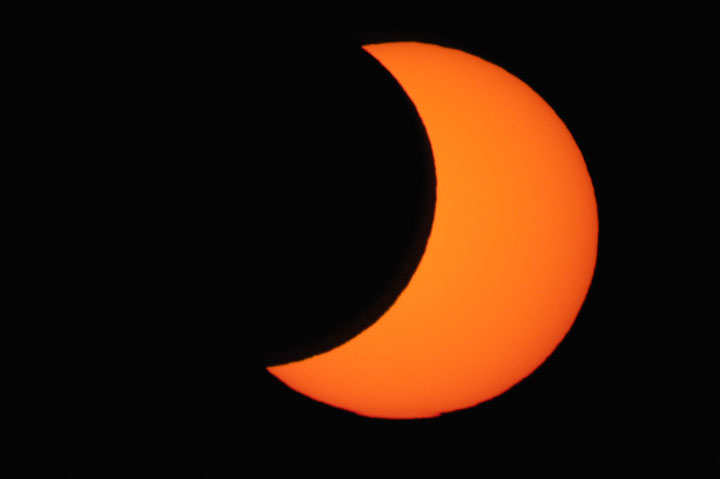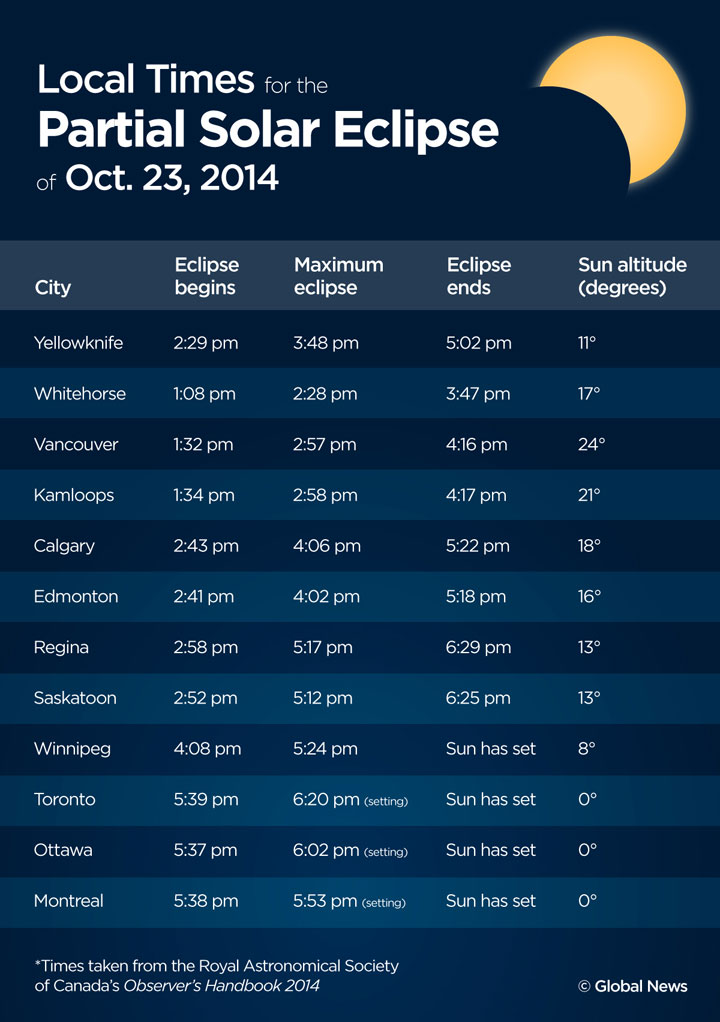TORONTO – Get ready for the final eclipse of the year.

Just two weeks after a total lunar eclipse, Canada is once again the place to be for the Oct. 23 partial solar eclipse.
READ MORE: April 15 starts off the year of eclipses
This year, Canada has had three eclipses: a total lunar eclipse on April 15; a total lunar eclipse on Oct. 8 and the upcoming Oct. 23 solar eclipse.
The eclipse will be visible across most of the country at least in some stage, except for Atlantic Canada where the sun will already have set by the time the eclipse begins.
A solar eclipse can only occur at a new moon.
Solar eclipses occur when the moon passes between Earth and the sun. It’s not the moon itself that’s causing us to see the eclipse, but rather it’s the shadow of the moon that we’re seeing. The moon has two shadows: the umbra and penumbra. The umbra is the darkest part.
The penumbra is the moon’s outer shadow, which is fainter. When the penumbral shadow falls on Earth we get a partial solar eclipse.
When to start watching
The best place for the solar eclipse is the west coast.
From Manitoba to Quebec, the eclipse will start as the sun starts to set, but viewers will still get a great view. The east coast won’t be able to see it.
How to safely view the eclipse
Though you must never look directly at the sun (and please don’t try to use sunglasses; you will damage your eyes), there are safe ways to watch a solar eclipse.
For one, you could check with your local science centre or a telescope store for eclipse glasses.
Welder’s goggles with a rating of 14 or higher are also safe to use. But do NOT use anything less than that or you risk damaging your eyes. And don’t try to hold them up behind a pair of binoculars or a telescope: the light filtering through binoculars or telescopes magnifies the sun’s rays, focusing the full light on the glasses, which could crack them and expose your eyes.
That’s also why you can’t use a telescope to look at the sun, unless you have a special solar filter or a dedicated solar telescope.
But if you can’t find eclipse or welder’s glasses, don’t fret: there’s another way.
This method, called pinhole projection, allows you to project an image of the sun onto a piece of cardboard.
You need to get two hard pieces of white cardboard. Punch a small hole (about pin-sized) in one piece of the cardboard. Placing the second piece of cardboard in front of that one, let the sunlight fall through the hole onto it. To make the image larger, move the piece of cardboard farther from the pinhole.
And, of course, if you’re inside during the eclipse,or can’t watch it safely, you can always watch online coverage at The Virtual Telescope Project or Slooh.
An earlier version of the story had incorrect times for Regina and Saskatoon. They have been corrected.





Comments